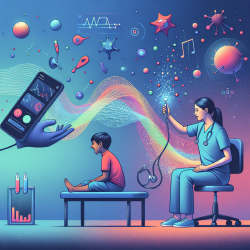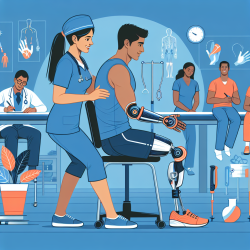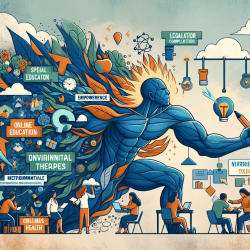Introduction to Graphene Biosensors in Pediatric Speech Therapy
In the realm of pediatric speech therapy, ensuring the health and safety of children is paramount. The recent research on "Simulation of Graphene Field-Effect Transistor Biosensors for Bacterial Detection" offers groundbreaking insights that can be translated into practical applications for speech therapists and educators. This research highlights the potential of graphene-based biosensors in detecting harmful bacteria, a crucial step in maintaining a safe environment for children.
Understanding the Role of Graphene Biosensors
Graphene Field-Effect Transistors (G-FETs) are explored as a promising platform for detecting bio-species, such as bacteria, which are often correlated with foodborne diseases. The study demonstrates how G-FETs, when functionalized with specific sensing probes, can rapidly detect bacteria like Escherichia coli (E. coli) with high sensitivity and selectivity. The use of COMSOL Multiphysics for simulation provides a deeper understanding of the operation of these biosensors, paving the way for their optimization in various applications.
Practical Applications in Speech Therapy
For practitioners in speech therapy, especially those working in school settings, integrating G-FET biosensors can enhance safety protocols. These sensors can be employed to monitor the cleanliness of therapy tools and environments, ensuring that children are not exposed to harmful pathogens. By maintaining a bacteria-free environment, therapists can focus more on delivering effective therapy without the added concern of health risks.
Data-Driven Decisions for Better Outcomes
The simulation results from the research provide valuable data on the efficiency of G-FET biosensors in different conditions. Practitioners can leverage this data to make informed decisions about the design and implementation of biosensors in their practice. For instance, understanding the relationship between bacterial concentration and the electrical response of the biosensor can guide the selection of appropriate sensor configurations for specific environments.
Encouraging Further Research
While the current study offers a solid foundation, there is ample room for further research. Speech therapists and researchers are encouraged to explore the integration of graphene biosensors in various therapeutic settings. Investigating the long-term reliability and efficacy of these sensors in real-world conditions will be crucial in establishing their role in pediatric therapy.
Conclusion
Graphene-based biosensors represent a significant advancement in ensuring the safety and effectiveness of pediatric speech therapy. By adopting data-driven approaches and integrating cutting-edge technology, practitioners can enhance therapeutic outcomes and contribute to the overall well-being of children. For those interested in delving deeper into the research, the original study provides a comprehensive understanding of the potential applications of G-FET biosensors.
To read the original research paper, please follow this link: Simulation of Graphene Field-Effect Transistor Biosensors for Bacterial Detection.










